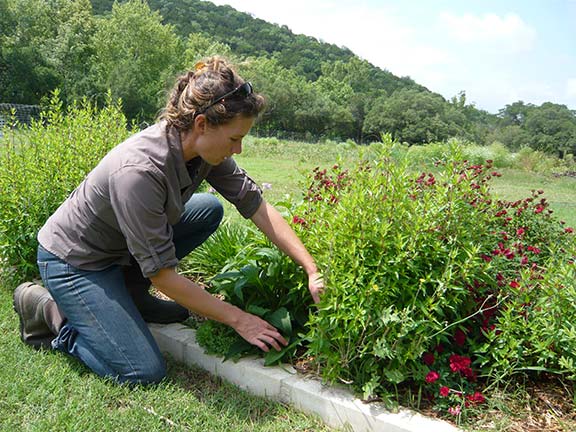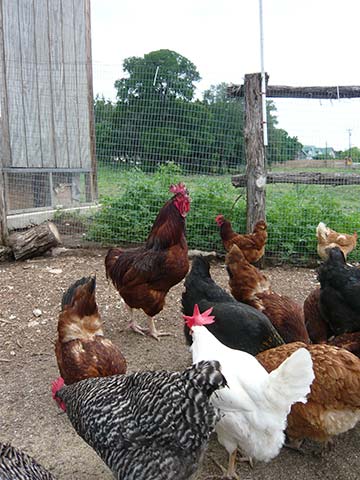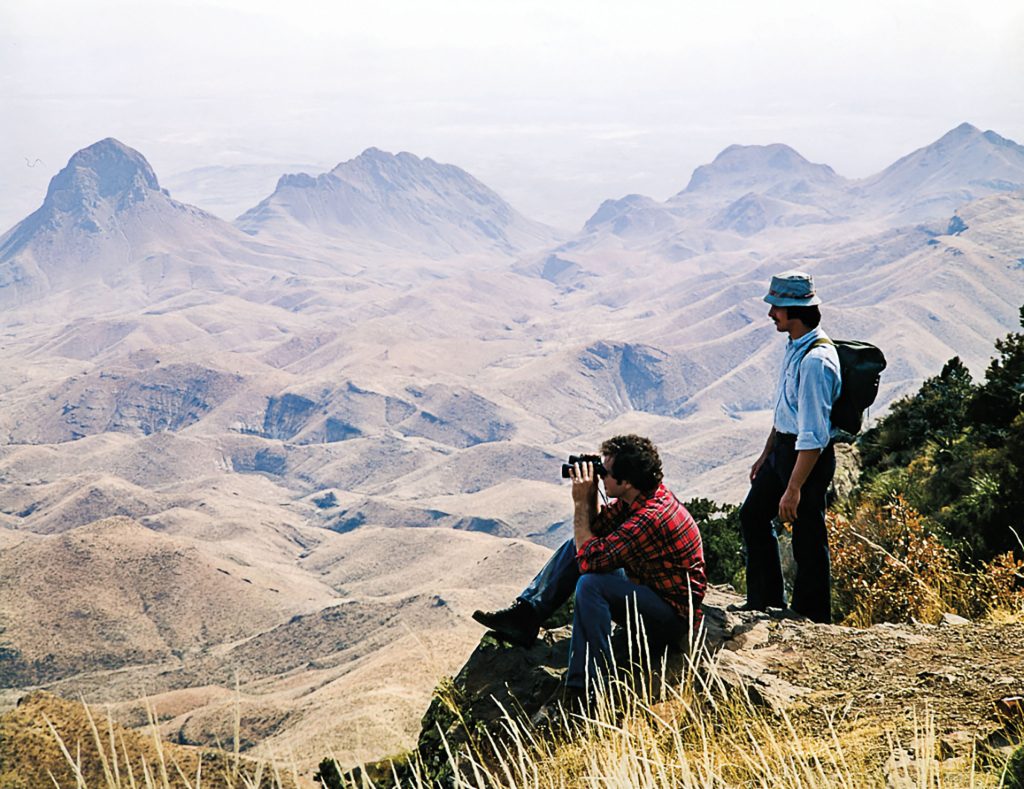
As chickens chortle in the background and the raspy buzz of a distant tractor mirrors the clackety-clack-clack of happy cicadas in the surrounding oak trees, I lean in closer to try to comprehend what I’m hearing: That plants can communicate with each other. I’m here at Travaasa, a resort and spa about a half-hour from downtown Austin, and I’m touring the 3 ½-acre farm near the equine stables with Farm Manager Kim Grabosky, who clearly loves her work here.
Visit Travaasa Austin’s website for more information including details about Kim Graboksy’s new herbal tincture classes.
The farm produces vegetables and fruits year-round and keeps Travaasa’s restaurant stocked with produce like cucumbers, tomatoes, peppers, carrots, squash, herbs, and greens like kale and lettuces. I’ve just completed a transformative two-hour session about non-verbal communication with the horses, and frankly I’m surprised to hear a similar emphasis on communication with the plants.
But Kim explains that the farm and the animal programs at Travaasa are inextricably linked. Take the chickens, for example: More than 100 chickens of many different breeds live in a spacious coop not far from the vegetable fields, and while Kim says the spa’s restaurant appreciates the eggs, their manure “is the most important reason for us to have chickens. For me, the chickens are most valuable as a source of nourishment for the soil.” The horse manure goes to improve the quality of the dirt, too. And while Kim tells me that someday she might harvest honey from the two beehives on property, “Mostly the bees are a great source for pollination. Our fruit crops have been so much better since we got the hives. In the dead of summer, the bees will be everywhere.”
All that I can wrap my head around. I’ve seen beautifully symbiotic relationships between plants and animals in my own garden, and I’m in awe. But plants “talking” to each other?
“The way that plants communicate with each other is all chemistry,” says Kim. “There are mycelium networks within the whole soil web, and plants can share nutrients and send chemical messages to each other.” She explains that these underground networks of fungi allow plants to “warn” their neighbors about impending threats such as aphids or other hungry predators, causing them to turn on their chemical defense mechanisms. And so seemingly separate plants are actually connected.
“So it’s better to plant things that can assist each other,” she says. “Knowing this helps us organize our crop rotations and also allows us to use our space carefully. The first challenge is to understand all the cues. For the first year, we spent a lot of time observing and trying to figure out what the plants were trying to tell us.
 “When you look at your yard or at your field,” she continues, “what is growing there also gives you a lot of clues about what is going on there and what you need. If I am pulling out weeds with big, long taproots, I probably have a lot of compaction in my soil. The plants are trying to pull nutrients from really deep to break up the soil. So If I don’t want that particular weed to grow, the best thing I can do is to plant something else that will do the same thing for me.
“When you look at your yard or at your field,” she continues, “what is growing there also gives you a lot of clues about what is going on there and what you need. If I am pulling out weeds with big, long taproots, I probably have a lot of compaction in my soil. The plants are trying to pull nutrients from really deep to break up the soil. So If I don’t want that particular weed to grow, the best thing I can do is to plant something else that will do the same thing for me.
“This ties together with the idea of companion plants, like carrots, onions, and lettuce, or another trio, leeks, spinach, and beets. Those plants are all friends with each other and can share nutrients in their mycelium networks, so planting them together is a great way to make the best use of your space. Also, okra, tomatoes, and peppers like each other for a different reason. By the summer, the okra will be about nine feet tall and will help create some shade.”
Before we mosey over to the chicken coop, where I find myself smitten with a beautiful Rhode Island Red hen, Kim shows me a garden innovation I’d never heard of: a Hugelkultur bed, also known as a rain bed. She says it’s a good choice for Central Texas gardens because of our heat and frequent water issues. “This last bed is a really fun bed we’re experimenting with. It’s kind of the last speedbump before the creek. Instead of a raised bed, you dig down about two feet then fill the space with large rotting logs. Ideally, they are spongy. Then you backfill it with the soil you dug out. We also added 18 inches of compost. The idea is that as water moves toward the creek, or to any lower space, it should hit the Hugel bed. When you put plants in a Hugel bed, they can draw both nutrients and water from the wood, so you don’t need irrigation. In the northeast and northwest, a raised bed makes sense, because you want to heat things up and dry them out by raising them away from the earth. But here, we want to cool things off and keep them moist. It’s a smart set-up for this climate.”








